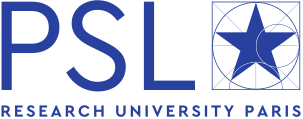Design: cognitive foundations (dir. Roberto Casati, IJN).
This proposal addresses the question of the cognitive foundations of design, with a particular focus on the design of cognitive artifacts, including artworks. Design shapes our artificial environment, changes our behavior; it is at the heart of the digital revolution that has multiplied and « democratized » cognitive artifacts. What are the theoretical foundations of the design of cognitive artifacts, and in what societal and historical context are they to be understood? Cognitive artifacts are a mark of our species, they define the very idea of culture; and widespread use of these tools incessantly changes our social and natural environment.
They are both the key element of the « extended » or « augmented » theories of the mind and a challenging frontier of design (as witnessed by the infographic revolution). To date, there are specific theories, descriptive or normative, for many types of artifacts, offered by philosophers and psychologists of representation, by historians of science, by the specialists of writing systems, by designers; but no unified theory, based on the architecture of the underlying cognitive mechanisms, has so far been proposed.
This project, based on prior researches led by Casati brings together and complements these scattered elements by providing a unified theoretical framework, offering a theory of « heterogeneous cognition » of the mind as a pragmatic user of cognitive artifacts. This research aims to provide an innovative approach to epistemic artifacts and their design. It emphasizes the history and phenomenology of our interactions with public representations, and tightly interfaces with education and design.
The key element of the proposal is a theoretical study of the interactions between the material constitution and the conditions of use of cognitive artifacts. One and the same system of objects can be used as a map (for navigation) or as a model (for generating spatial inferences). The syntax/pragmatics interface guides design, which is always in search of cognitive advantages justifying the adoption of an artifact for a specific purpose. These advantages in turn depend on the architecture of the mind and the possibility of change or recycle existing functions. Freeing up working memory, storing information, making inferences accessible and their results observable, prompting motor responses, linking different modules, enhancing information, providing hyperstimuli, indexing, protecting attention, fostering the examination of an argument, making orientation possible, are all examples of cognitive advantages opened up by the the use of this or that specific artifact. They are made possible by specific mechanisms: information shortcuts (drawing), external bridges between existing capacities (writing systems), recycling of functions (graphics, which use visual discrimination in an inferential goal).
The research group includes two PhD students (Elena Tosi-Brandi and Pierre Bonnier), a visiting PhD student (Nicolas Porot, CUNY), an MA student (Valentin Lewandowski), and a Braudel post-doc researcher (Nicole Hall). One of the question the project addresses in collaboration with ENSAD (Samuel Bianchini) and NYU Abu-Dhabi (Goffredo Puccetti) is the use of public buildings and artworks for scientific and educational purposes project. Casati and Pierre Bonnier are also collaborating with Attoma Design, one of the leading design firms in the Paris area, on projects related to navigation.
